Jane Boleyn has always been seen as a divisive character. Did she bring about the fall of not one but TWO queens?
[Read More...]-
Jane Boleyn by Charlie Fenton – Lil’s Book Reviews
-
May 12 – An innocent baron is charged with treason, an obstinate friar, and Martin Luther is proclaimed a heretic
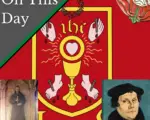
On this day in Tudor history, 12th May 1537, John Hussey, a Northern baron, was charged with treason even though he was innocent and had actually done the opposite of what he was accused.
Poor man! Find out what happened to John Hussey, Baron Hussey…
[Read More...] -
May 11 – Two Carthusians lose their lives and the doctor who saved a queen
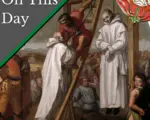
On this day in Tudor history, 11th May 1537, Blessed John Rochester and Blessed James Walworth, two Carthusian monks from the London Charterhouse, met their ends in York after being condemned for treason.
In a five-year period, eighteen Carthusian monks were executed, but why? What had King Henry VIII got against these men of God? What happened?
[Read More...] -
May 10 – Henry VIII’s annulment is nearly done, Ivan the Terrible, and the suicide of John Clerk
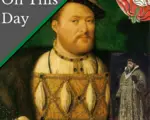
On this day in Tudor history, 10th May 1533, the Great Matter, Henry VIII’s quest for an annulment of his marriage to Catherine of Aragon, neared its conclusion.
Find out what happened on this day in 1533, and what happened next…
[Read More...] -
May 9 – Henry VII’s remains go to St Paul’s, a proxy marriage for Marie de Guise, and colonist William Bradford

On this day in Tudor history, 9th May 1509, the remains of King Henry VII were taken to St Paul’s to prepare for his burial at Westminster Abbey.
I share an account of the journey to St Paul’s…
[Read More...] -
May 8 – Charles Wriothesley, Elizabeth I’s Acts of Uniformity and Supremacy, and a show of strength
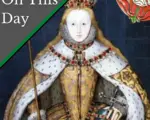
On this day in Tudor history, 8th May 1508, herald and chronicler Charles Wriothesley was born in London.
Wriothesley’s chronicle is one of the major primary sources for King Henry VIII’s reign, so let Claire tell you more about its writer, Charles Wriothesley, Windsor Herald, and what heralds actually are.
[Read More...] -
Elizabeth I’s Early Life Crossword Puzzle

How much do you know about the early years of that iconic queen, Elizabeth I?
Test your knowledge with this fun crossword puzzle.
[Read More...] -
May 7 – Bothwell’s ex-wife, the Siege of Leith, and Bishop Fisher is cruelly tricked
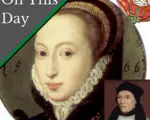
On 7th May 1567, eight days before James Hepburn, Earl of Bothwell, married Mary, Queen of Scots, the Catholic court granted him a divorce from his wife, Lady Jean Gordon.
Who was Jean Gordon? Why did Bothwell divorce her? And what happened to Jean afterwards?
Find out more about Bothwell and Jean’s marriage, and about Jean’s life…
[Read More...] -
Anne Boleyn’s Fall – A Timeline
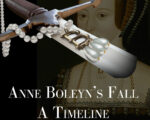
As we get ever closer to 19th May, have you ever wondered about Anne Boleyn and what was happening to her?
[Read More...] -
May 6 – The alleged killer of the Princes in the Tower, the end of the Beaufort line, and the Great Bible
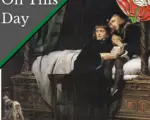
On this day in Tudor history, 6th May 1502, in the reign of King Henry VII, Sir James Tyrell, former royal councillor, was executed for treason due to his links to a known traitor.
But it’s not for his time as a trusted councillor, or for his links to a claimant to the throne that he is known, but for his alleged involvement in the murders of the Princes in the Tower.
[Read More...] -
May 5 – The end of a religious radical, Henry Sidney and a pardon for the Dowager Duchess of Norfolk

On this day in Tudor history, 5th May 1543, religious radical, Adam Damplip, also known as George Bucker, was hanged, drawn and quartered in Calais, which was an English territory at the time.
Although it was his heretical preaching that had got him into trouble, he couldn’t be executed as a heretic, so he was condemned as a traitor instead – clever, but nasty!
[Read More...] -
May 4 – Bess of Hardwick, Edmund de la Pole and an awful end for some Carthusian monks

On this day in Tudor history, 4th May 1608, Elizabeth Talbot, Countess of Shrewsbury, who is commonly known as Bess of Hardwick, was buried.
Find out a bit more about this fascinating Tudor lady in this short video…
[Read More...] -
May 3 – Cecily Neville, Sir Edward Rogers and Thomas Tusser
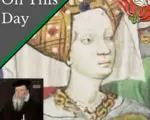
On this day in Tudor history, 3rd May 1415, Cecily Neville, matriarch of the House of York and mother of two kings, was born.
Find out about this Duchess of York, and how she is linked to royalty and the Tudors…
[Read More...] -
Medieval Stained Glass – To tempt an artist by Toni Mount

A warm Tudor Society welcome to historian and author Toni Mount and huge congratulations to her on the forthcoming release of her tenth Seb Foxley medieval murder mystery, a series I adore.
Toni is sharing a guest article with us to celebrate the publication of The Colour of Rubies…
In my tenth and latest Seb Foxley medieval murder mystery, The Colour of Rubies, the story requires our hero to go to Westminster Palace in order to discover a dead body – what else! Those familiar with my scribe/artist/sleuth will know that colour means everything to Seb so what better reason could he have for going to the royal palace with his brother, Jude, than to admire the beautiful stained glass in the Chapel of St Stephen?
[Read More...] -
May 2 – Mary, Queen of Scots escapes, and an Anabaptist is burnt
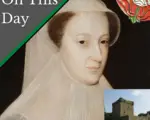
On this day in Tudor history, 2nd May 1568, Mary, Queen of Scots, who had recently been forced to abdicate in favour of her son, King James VI, successfully escaped from Lochleven Castle.
How did she end up a prisoner at Lochleven?
How did she escape?
And what happened next?
[Read More...] -
1 May – Evil May Day Riot, May Day and a hot-tempered courtier
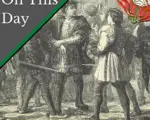
On this day in Tudor history, 1st May 1517, foreign traders in London had their shops and property vandalised and damaged by a mob of angry apprentices and labourers.
What sparked off this “Evil May Day Riot”? What happened to the troublemakers? And how did Queen Catherine of Aragon and Henry VIII’s sisters, Margaret and Mary, get involved? I explain…
[Read More...] -
Mary, Queen of Scots’ Love Life Crossword Puzzle

How much do you know about the men linked to Mary, Queen of Scots?
Test your knowledge of this Scottish queen’s love life with this fun crossword.
Simply click on the link or image below to open and print out…
[Read More...] -
Did Henry VIII Regret the Fate of Anne Boleyn

What did Henry VIII think about Anne Boleyn as he grew older? Did he regret that she was executed? Join Sandra Vasoli as she discusses this fascinating question.
[Read More...] -
April 30 – A lawyer is burnt and two Tudor statesmen die

On this day in Tudor history, 30th April 1532, in the reign of King Henry VIII, lawyer James Bainham was burned at the stake at Smithfield for his reformed faith.
Find out more about what led Bainham to the stake, and hear an account of his end…
[Read More...] -
April 29 – From prisoner to Lieutenant of the Tower, Bothwell prepares to marry Mary, Queen of Scots, and Anne Boleyn, Henry Norris and Mark Smeaton

On this day in history, 29th April 1617, Sir Dru Drury died at the age of around 85 at his home, Riddlesworth Hall in Norfolk.
Drury may have died in the Stuart period, but he was a prominent Elizabethan. And he’s a man that went from being a prisoner to being Lieutenant of the Tower of London! Find out more about him…
[Read More...] -
Blog: A Tudor Style Banquet, Heritage Festival and Easter Fun
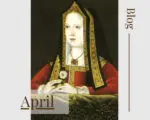
-
Tudor Burial
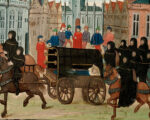
As yesterday was the anniversary of the burial of Queen Elizabeth I in 1603, I thought I’d share these two talks on Tudor burial from the Tudor Society archives.
In this two-part series on burial in Tudor times, I discussed how the remains of a commoner were prepared for burial, then those of the wealthier classes, with real examples from the records, and I also discussed the subjects of embalming, and heart and entrails burial.
[Read More...] -
April 28 – Elizabeth I’s funeral, Sir Anthony Browne and an executed priest

On this day in Tudor history, 28th April 1603, Queen Elizabeth I, the last Tudor monarch, was laid to rest at Westminster Abbey in a lavish funeral.
Find out more about her funeral…
[Read More...] -
May 2022 – Tudor Travel and Summer
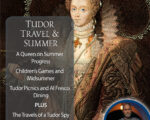
We’ve turned the corner and the warmer weather is now coming in! What did the Tudors do in the summer months, and where did they go? Enjoy this bumper magazine edition.
[Read More...] -
April 27 – An important Elizabethan judge and a Tudor and Stuart adventurer

-
April 26 – Catherine Carey marries and Shakespeare is baptised
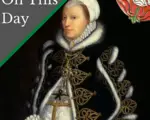
On this day in Tudor history, 26th April 1540, Catherine Carey, daughter of Mary Boleyn and a maid of honour to Queen Anne of Cleves, married Francis Knollys.
The marriage was happy and successful, and resulted in at least 14 children…
[Read More...] -
April 25 – A Tudor troublemaker, Catherine Parr publishes a book, and the Tudors celebrate St Mark’s Day

On this day in Tudor history, 25 April 1557, Tudor troublemaker Thomas Stafford, grandson of Margaret Pole, Countess of Salisbury, proclaimed himself “Protector of the Realm”. It didn’t go down well!
Find out why he did this, what happened and how it wasn’t his first brush with trouble…
[Read More...] -
Henry VIII’s Family Word Search

How much do you know about Henry VIII’s family members?
Test yourself with this fun word search puzzle, and remember, the words can go in any direction!
[Read More...] -
April 24 – Mary, Queen of Scots gets married, and time to divine your future love!
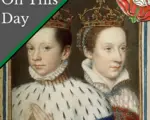
On this day in Tudor history, 24th April 1558, fifteen-year-old Mary, Queen of Scots, got married for the first time. The groom was fourteen-year-old Francis, the Dauphin of France.
Find out more about the bride and groom, their wedding and what happened to them…
[Read More...] -
April 23 – The birth and death of William Shakespeare, St George’s Day, and George Boleyn loses out

Not only is today the anniversary of the traditional birthdate of William Shakespeare in 1564, but it is also the anniversary of his death in 1616!
In this video, I share some facts about the Bard, along with a few phrases from his works that have become part of common parlance.
[Read More...]
